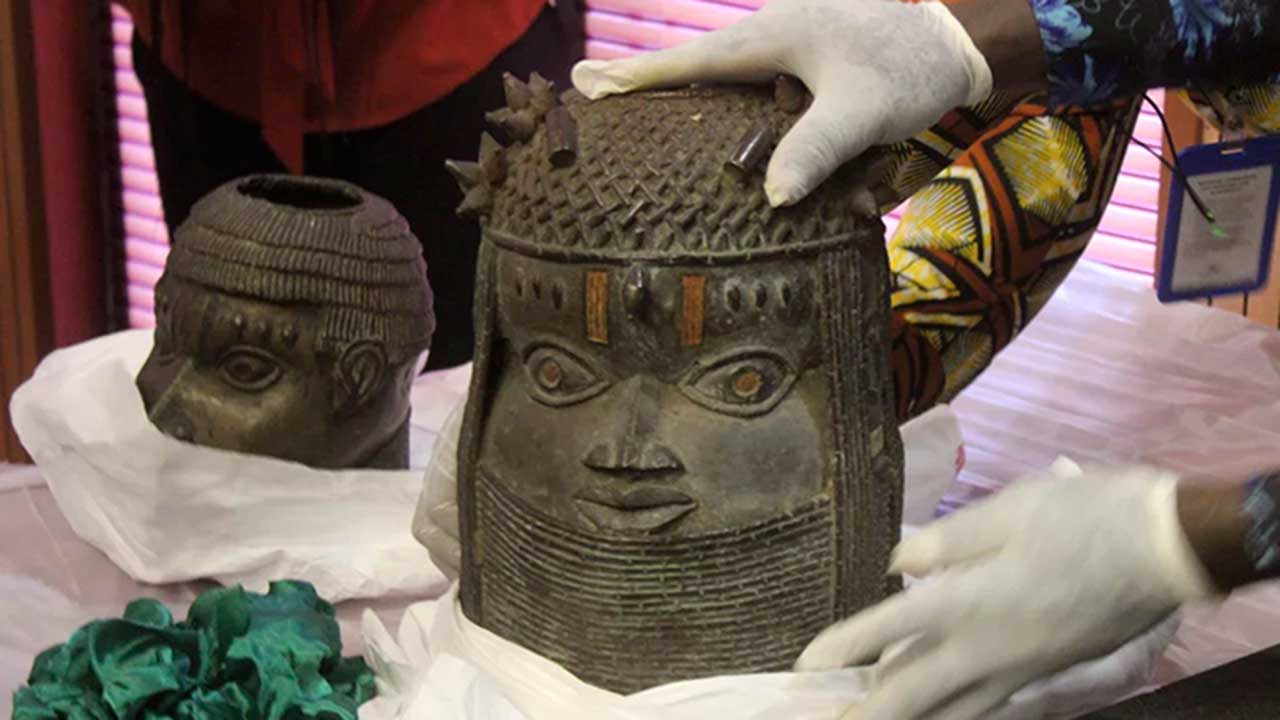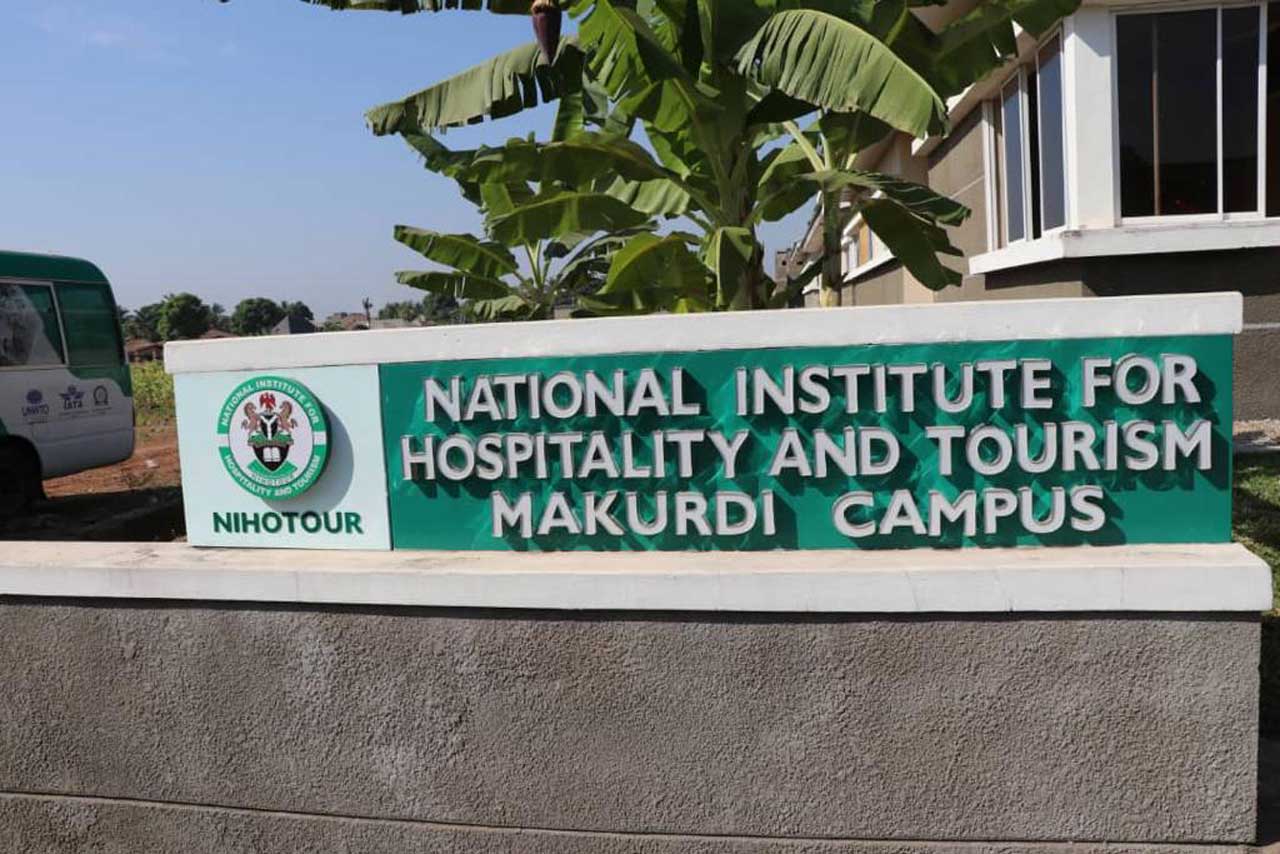 Benin Bronzes, ancient castings from Benin Empire, have been the subjects of intense conflict. While Nigerians, especially Benin descendants clamour for the return of their cultural heritage, curators of Western museums believe sending them back to Africa will be a total stripping them out of their heritage. But the challenge is, searching for home for already returned artefacts is still work in progress, writes GREGORY AUSTIN NWAKUNOR.
Benin Bronzes, ancient castings from Benin Empire, have been the subjects of intense conflict. While Nigerians, especially Benin descendants clamour for the return of their cultural heritage, curators of Western museums believe sending them back to Africa will be a total stripping them out of their heritage. But the challenge is, searching for home for already returned artefacts is still work in progress, writes GREGORY AUSTIN NWAKUNOR.
Though Benin Empire ceased to exist on February 18, 1897 when it was vanquished by the punitive expedition of Great Benin, and the eventual deposition of Oba Ovonramwen Nogbaisi and his regime, the over 13 million people of Benin descent still revere the throne and see the king as God’s representative on earth, Omo N’Oba N’Edo Uku Akpolokpolo, an indication that the Oba is both a traditional ruler and spiritual leader of the people. He is a god-like figure of cultural authority to his people.
While not an elected official, the Oba has great political, moral and social influence in not just Benin, but also the country as a whole. He is not someone to be crossed or challenged with impunity. His person and his role in Nigerian society appear to effectively transcend the strictures of law.
The Oba still remains the absolute monarch, whose words are hallowed, even though they do not have the same weight or force of law as they had in pre-invasion era. He is still very vocal about the looted artefacts and making them available for research.
What should be paramount in the new governor, Senator Monday Okpebholo’s culture agenda is home for returned Benin Bronzes.
After a century and two decades of nomadic existence, government should get a permanent home for these over four thousand bronzes that were looted and shipped to London as spoils of war, and later cast like lots, and distributed among many great museums around the world.
It is hardly surprising that as many as 160 museums and institutions around the world hold artefacts looted from Benin Empire in their collections and very few are willing to return them to their rightful homes, especially the British Museum, which has over 900 objects in its collection, of which over 100 can be seen in a permanent changing display within the Museum’s galleries.
As at when the former Minister of Information and Culture, Alhaji Lai Mohammed, announced the launch of a campaign for return and restitution of Nigeria’s looted artefacts in 2019, there had been long queues of protests and demands, which snaked out of the country. The campaign further emboldened agitators such that in less than two years, there had been a gale of restitution of looted artefacts.
In November 2022, the newly launched Digital Benin, a German-curated and financed online database, listed 5,246 Bronzes in 131 institutions around the world, including 27 British ones.
But it also revealed obvious problems with Nigeria’s own collections and record keeping and the poor state of Nigeria’s museums. Many Nigerians accept that any Bronzes not kept hidden away in vaults risk being stolen, as has happened so often – and been well reported – in recent decades.
The challenge of Nigerian museums and the preservation of artefacts like the looted Benin Bronzes are twofold. The Nigerian government has limited resources to properly maintain and protect the artefacts, and the repatriation of the looted Benin Bronzes has been a long and difficult process.
The Nigerian government has been working to repatriate the artefacts since the 1970s, but the process has been hindered by a lack of resources and political will.
Additionally, the artefacts are often in poor condition owing to their age and the conditions in which they were stored. As such, the Nigerian government must find ways to properly preserve and protect the artefacts, while also ensuring that they are returned to their rightful owners.
Nigeria’s museums need a team of efficient and incorruptible curators to locate the state’s museum inventories at independence in 1960; to add to them everything bought or restituted since then; to photograph everything that can be found today; and to circulate photos and descriptions of anything that cannot be found.
However, the controversy over the rightful owner has denied the artefacts home. Trouble initially started between the Edo State government and the Royal Benin Palace over who would keep the artefacts before a third party, Igun-Igbesamwan-Owina Descendants Cultural Movement of Europe and America, stepped in. A fourth, the Federal Government, also got involved.
Oba Ewuare II had stated the artefacts were palace’s property and not the state’s. He also affirmed that a Benin Royal Museum built in the palace is the legitimate destination of the artefacts.
His position was in reaction to Edo State government’s proposal to keep the artefacts in Edo Museum of West African Arts (EMOWAA), now Museum of West African Arts (MOWAA).
The Benin monarch also held a meeting with palace chiefs and enigies, market women and others stakeholders on the repatriation of the looted artefacts, where he urged the Federal Government to take custody of the artefacts on return pending the construction of the Benin Royal Museum.
He said the looted artefacts awaiting repatriation from Europe were not the property of the Edo State government, but of the palace.
Speaking through Chief Sam Igbe, the Iyase of Benin Kingdom, after the meeting, he had said the artefacts were the cultural heritage of the Benin Kingdom created by the ancestors and forefathers within the traditional norms and rites.
“They are not the property of the state government or any private corporate entity that is not a creation of the Benin kingdom.
“The right destination for the artefacts to be repatriated as already pronounced by his father is the Benin Royal Museum that will be sited within the palace of the Oba of Benin from where they were looted.”
Though not opposed to the idea of the Federal and state governments taking custody of the artefacts and keeping them in a museum to be built by them, he had expressed his objection to a private trust managing the ancient artworks.
Oba Ewuare II is said to have opposed this move on the ground that it would amount to private appropriation of the cultural heritage of his kingdom.
Disowning Legacy Restoration Trust, he said: “For categorical clarification, these individuals and groups of persons are not known nor authorised by the Oba of Benin, who is the original owner of the looted artefacts and the custodian of Benin customs and tradition.”
The former minister revealed this was why his Ministry and the National Commission for Museums and Monuments (NCMM) had always involved the Edo State government and the Royal Benin Palace in discussions and negotiations that resulted in the impending return of the antiquities.
This was the state of play until the Federal Government stepped in on Saturday, July 17, 2021, when the Minister addressed the media and affirmed that the Federal Government, not the Royal Benin Palace or the Edo State government, would keep the Benin bronzes.
RECALL that after decades of campaign, Germany led the biggest détente in restitution history by signing off over 1,130 artefacts. This decision, no doubt, is considered as the most significant by a member state at this parlous juncture of moral struggle.
In 2022, the German government announced the transfer of ownership of some 1,000 Benin Bronzes.
Germany’s Foreign Minister Annalena Baerbock flew to Nigeria’s capital, Abuja, and handed over 22 of the most spectacular objects to the Nigerian government.
She said it was “a step that was long overdue”.
Two years after, none of the bronzes she returned have been displayed in public since. They, and others, which have trickled back from museums in the UK and America, are in secure storage – while two are in the Oba’s palace in Benin City.
Germany’s decision reduced Benin Dialogue Group’s (BDG) influence and wiped off its decade-and-a half long hankering to become a lender of last resort for the artefacts.
The Group is an important platform for dialogue and negotiation between the various stakeholders involved in the repatriation of the Benin Bronzes.
The Group’s work is essential in ensuring that the repatriation process is conducted in a fair and equitable manner, and that all parties involved are able to reach a mutually beneficial agreement.
Created in 2007, the BDG has championed discussions on the artefacts. BDG comprises museums in Austria, Germany, the Netherlands, Sweden and the UK, alongside representatives of the Edo State government, the Royal Court of Benin and the National Commission for Museums and Monuments (Nigeria).
The group has remained ever since with its major decision being to release the works on loan. Many of the museums had made up their minds on a rotating loan, which British Museum pledged to help with the archaeological first phase for the project, for which it helped secure £3 million in funding.
Hartwig Fischer, the British Museum director, said when plans were revealed in 2020 that this would provide “the groundwork for the EMOWAA” which would be “one of the most significant museum initiatives in the coming decades.”
Whatever artefacts were found in the archaeological work was to be housed in the EMOWAA, and the British Museum had suggested that its own collection of 950 Benin Bronzes – the largest in the world – could be loaned to the new museum once it was completed.
According to the signed agreement, Edo – as the recognised owner of the bronzes – was tasked with building a dedicated museum where the objects could be professionally curated and publicly displayed, and Germany pledged several million euros to support the museum’s construction.
Crucially, Godwin Obaseki, the former governor, had hoped the (Edo)Museum of West African Art (E)MOWAA) to house the Benin Bronzes, which opened in stages this month. The Museum is overseen by the EMOWAA trust, a Nigerian non-profit organisation.
Obaseki said constructing a building that would house the artefacts was one of the conditions given by the international communities before returning the stolen artefacts.
Bronzes recently restituted from museums in Britain, America and, above all, Germany, have been received by the NCMM in the name of the Nigerian people.
European museums had preferred rotating loans of the looted Benin Bronzes instead of outright return, because they believe that it is the best way to ensure that the works of art are accessible to the widest possible audience.
By allowing the works to be seen in multiple locations, the museums are able to share the cultural heritage of the Benin Bronzes with a larger number of people.
Additionally, rotating loans allow the works to be studied and appreciated in different contexts, which can lead to a greater understanding of their cultural significance.
Europe had not supported the Benin Royal Museum, because it was considered a private institution and the European Union has a policy of not providing direct financial support for such. Instead, the European Union has funded the establishment of a private museum in Benin called (Edo) Museum of West African Arts (E)MOWAA) because it is a non-governmental organisation that is dedicated to preserving and promoting the culture and history of West Africa.
The European Union believes that this type of institution is better suited to preserving and promoting the culture and history of the region, as it is not subject to the same political pressures as a government-run institution.
Controversy
THE explanation fits better now, as the Federal Government seemed to have finally settled the issue of home for restituted Benin Bronzes, when the immediate past President, Muhammadu Buhari, who left office on Monday, May 29, 2023, issued a declaration handing over the artefacts — which include decorated brass plaques, carved ivory statues and ceremonial masks — to the current Oba of Benin, Ewuare II.
But Buhari’s announcement threw these plans into disarray. The unexpected twist, many Europeans feel, has stoked fears that many of the bronzes will end up on the black market.
A government Notice No. 25 in the Federal Republic of Nigeria Official Gazette No. 57, Volume 110, which is dated March 28, 2023 titled: ‘Notice of Presidential Declaration – on the Recognition of Ownership, and an order vesting custody and Management of Repatriated looted Benin Artefacts in the Oba of Benin Kingdom’ has affected this process. The gazette ordered that the ‘ownership of artefacts looted from the ancient palace of the Oba and other parts of Benin Kingdom be and is vested in the Oba.’
The document instructed that the repatriated artefacts should be kept within the palace, other locations within Benin City, or other places that the Oba and the government consider safe. It further ordered that the “Oba shall be responsible for the management of all places where the repatriated artefacts are domiciled or located.”
Already, Oba Ewuare II has notified the Ambassador of the Netherlands to Nigeria, Ambassador Wouter Pomp on the significance of Nigeria’s Presidential declaration in the recognition of ownership and an order vesting custody and management of repatriated looted Benin artefacts to the monarch.
A statement signed by the Chief Press Secretary to the Benin Monarch, Iguobaro Osaigbovo, and made available to journalists in Benin City Edo State, quoted the Oba, thus: “They are spelt out clearly. The ownership, custody, and management, which is vested in the Oba, as an institution. That is the law.”
He emphasised that the ongoing plans for the construction of the Benin Royal Museum Project at the instance of the Nigerian government are on course.
According to him, “it is a Federal Government project to build the Benin Royal Museum. We have been on it for some time now.”
When the Director of Legal Services of the National Commission for Museums and Monuments, Babatunde Adebiyi, spoke with The Guardian, he said, “the Federal Government is constructing a gigantic building in Benin City currently, and it’s a storage facility for repatriated antiquities.”
He said, “other antiquities, national antiquities can be stored there, but it’s on the pedestal that you can compare with those that you find in Europe. At least 80 per cent completed now, probably more. So, a few months ago, it was like 80 per cent, 90 per cent.”






